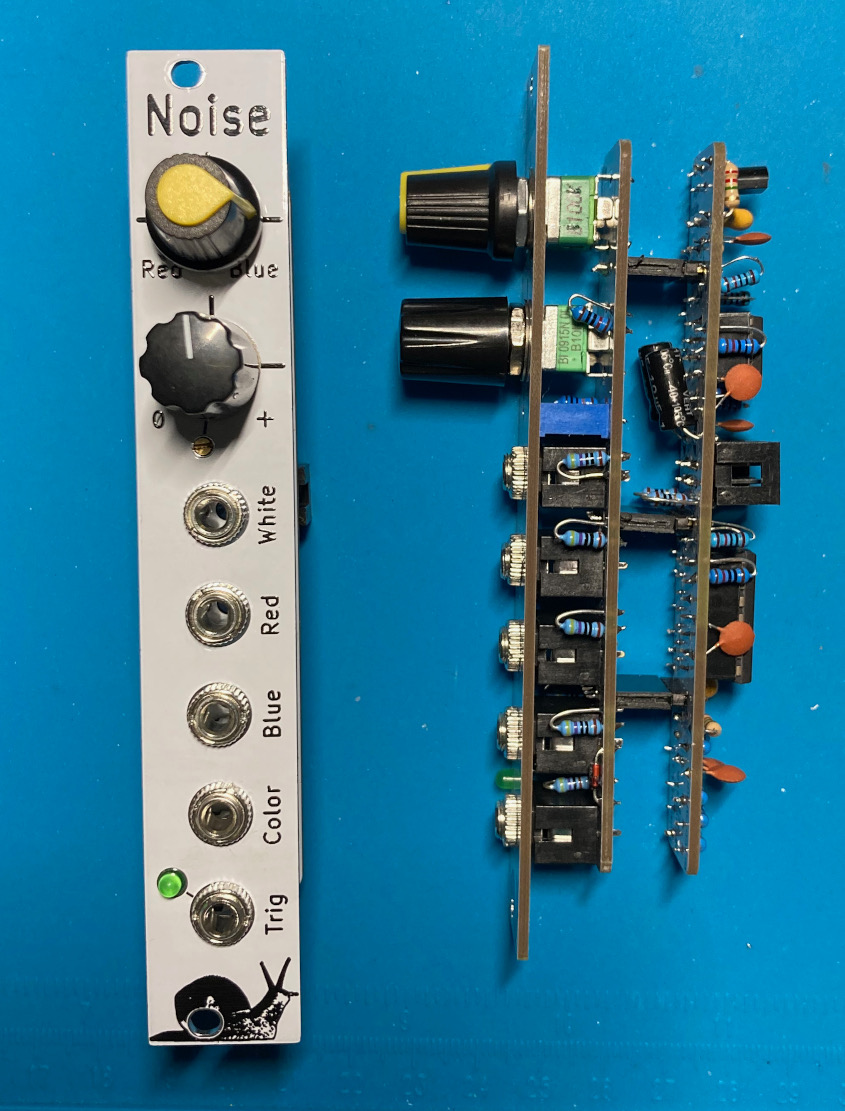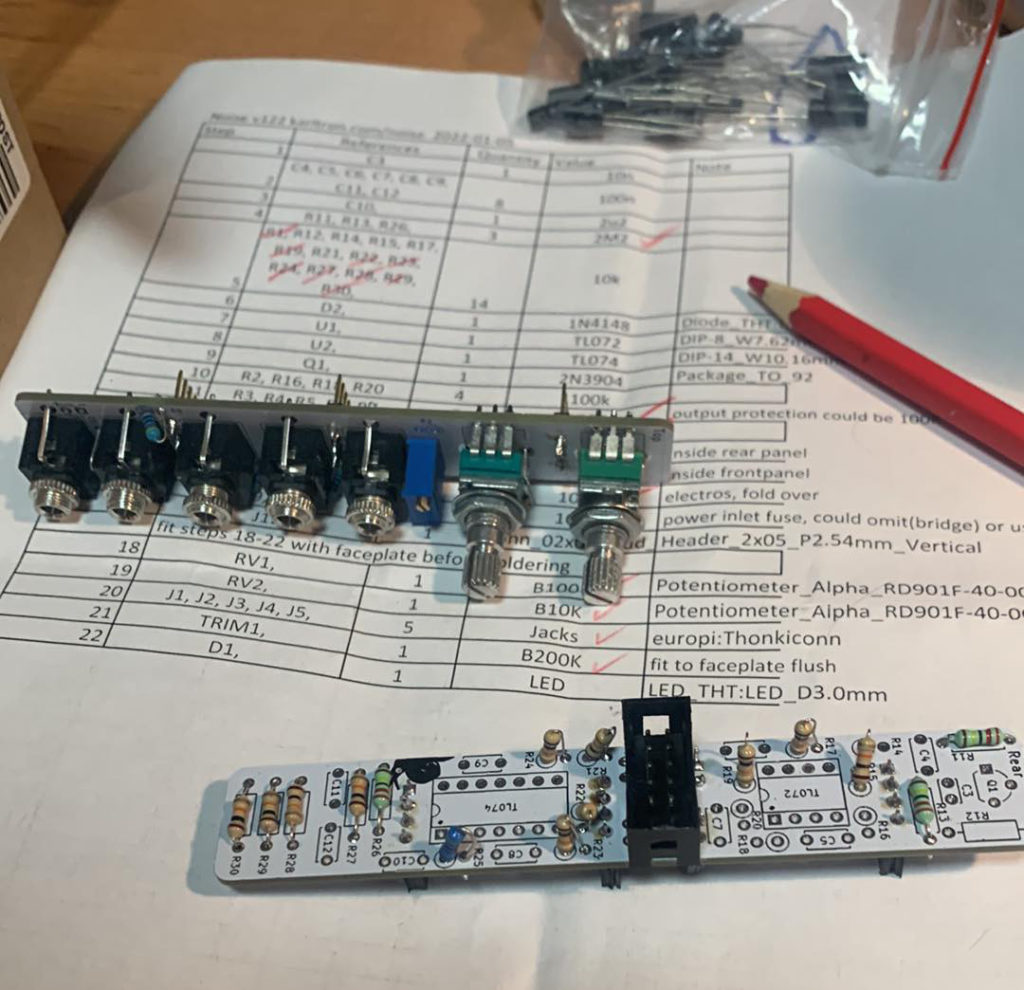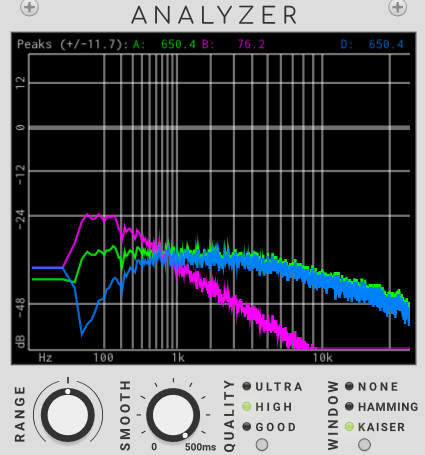Noise is a white-noise generator based on the classic single transistor breakdown sound. Then it’s amplified and manipulated to give you colored noise, adjustable tone, and a random trigger chain output too. This 4HP module is important for randomization or noisy things like percussion synthesis.

Build in the throughhole style, Noise is easy for beginners to assemble, but deeper than some of my other 4HP modules.
No CV inputs on this module. The first knob selects the tone of the ‘color’ output by mixing the red and blue outs. The second knob selects the rate of the random trigger gen from nothing to constant.
| Price | ||
| PCB/Panel | $20 | |
| Full Kit (incl pcb/panel) | $75 | |
| Built & Tested | $110 |
It’s 35 millimeters deep due to dual PCB construction. Power usage is 15 mA on the +12 and -12V rails.
BOM and Build Guide document for v111
BOM and Build Guide for v122 and an ibom html.
v111 works but has an error in the silkscreening, so it’s noted in the build guide to be careful around resistors 26/27. v122 fixes that.

Calibration: The trimmer is to set the reasonable range of the trigger output. Turn the second knob (marked 0/+) to 3-oclock and adjust trimmer until the speed of output is fast but not constant. Then you should have the full range, from no triggers to always triggering, available on the second knob.
Measurements: Sound demos are important but on this sort of module my normal Youtube/cellphone video isn’t going to tell you how the low rumble really sounds. I’ve recorded some snippets instead. These measurements are taken from the Noise module, through a passive attenuator (WMD SSF Quad Atten) to get the levels similar at the audio interface (Expert Sleeper ES-8). Audio is read into VCV-Rack for analysis, recorded to WAV and converted to MP3 with Audacity at ‘extreme’ quality settings.


The spectra pictures shows the white is quite flat, blue and white are similar in high tones, with significant differences at the 100-200 HZ zone. Internally the red/blue are made with 159Hz single pole filters.
Demos